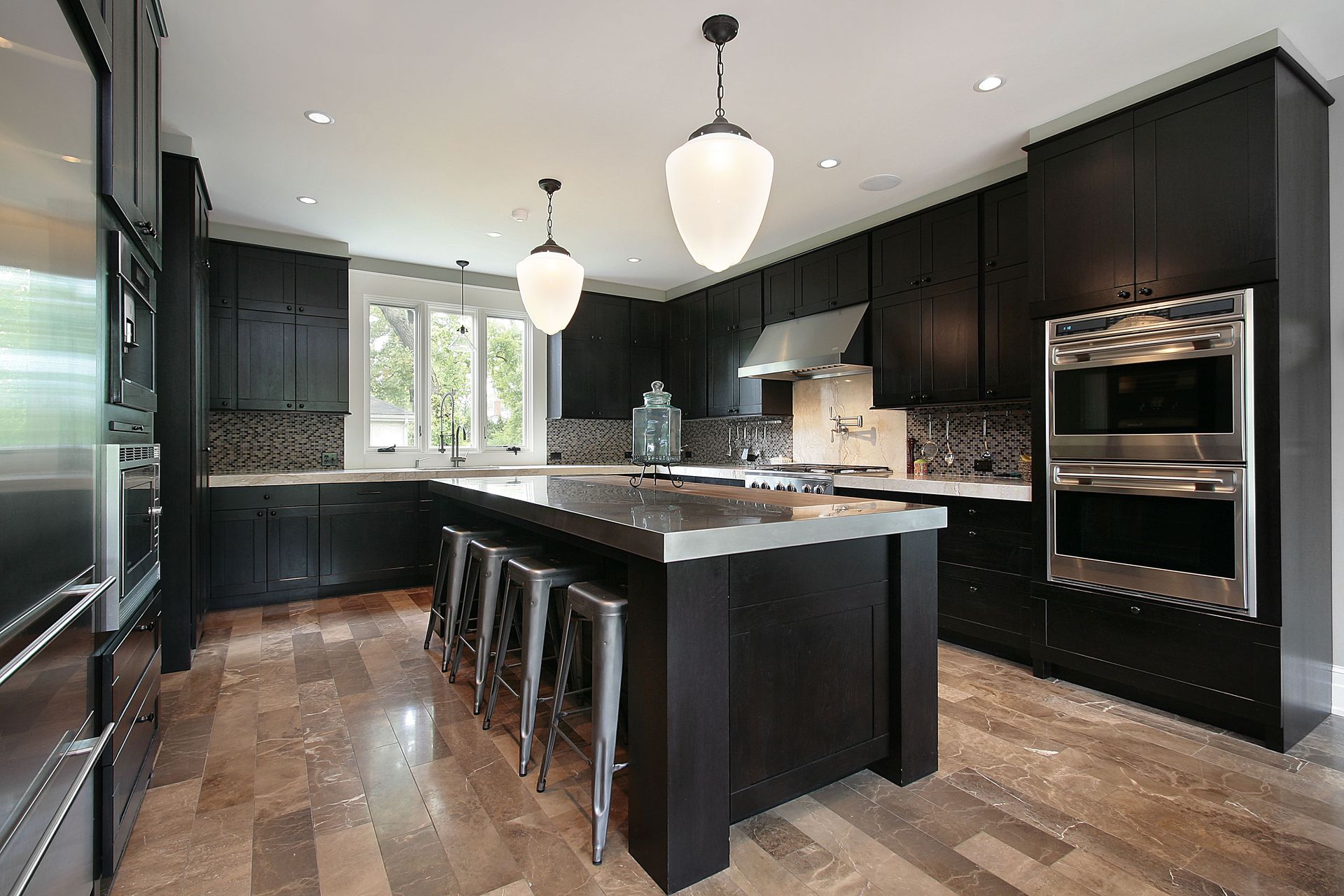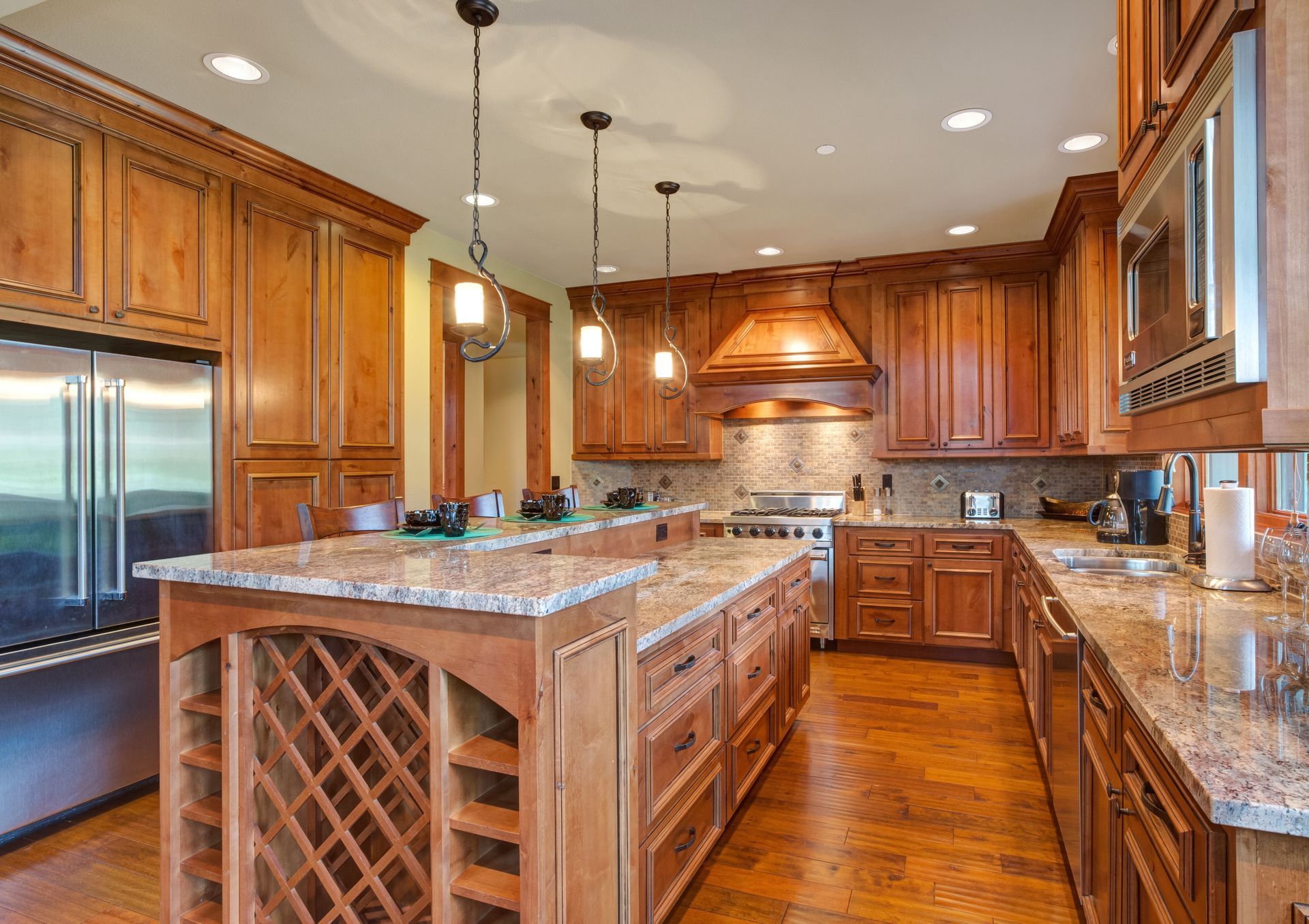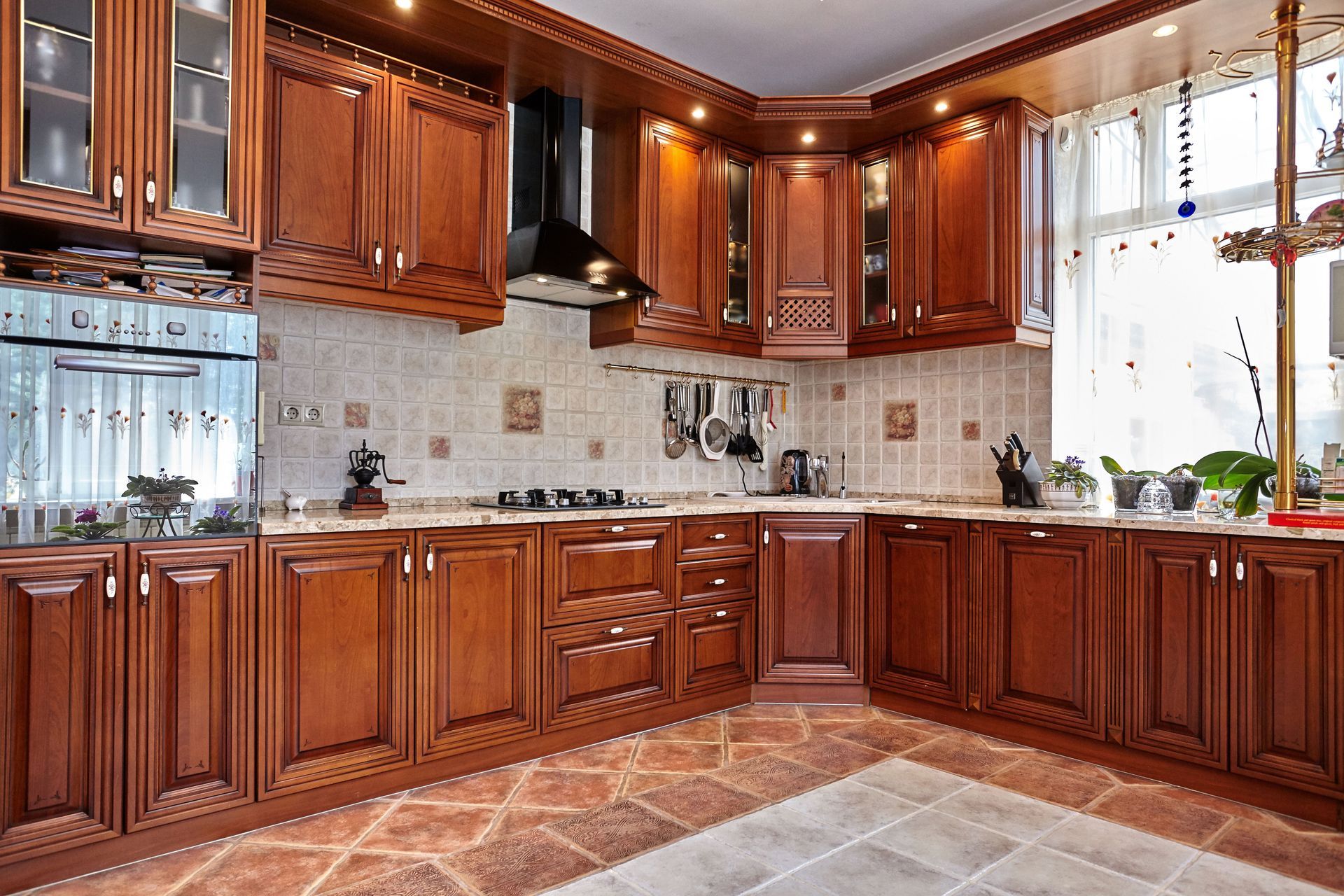October 31, 2025
When you’re redesigning your kitchen, customizing your kitchen cabinets is one of the most rewarding ways to create a space that feels both personal and practical. Cabinets aren’t just storage — they’re the architectural backbone of your kitchen’s design. They define the style, influence the lighting, and determine how comfortably you can cook, gather, and entertain.
From the material you choose to the way your cabinet doors open, every decision affects how your kitchen performs day to day. With a few smart choices, your cabinets can deliver long-term beauty and value. According to Kitchen Design Concepts, 46% of homeowners choose white as their top preferred cabinetry color. That means most kitchens lean toward light, clean looks — but the right customization strategy can make even timeless white cabinetry feel distinct and tailored to your personality.
Below are five practical tips to help you customize your cabinets for both elegance and everyday usability.
1. Choose the Right Finish for Kitchen Cabinets
Selecting the right finish is where the look of your kitchen truly comes to life. A finish defines how your kitchen cabinets reflect light, resist wear, and integrate with the rest of your home. Painted finishes provide a smooth, versatile canvas that can make a small kitchen appear larger. Stained wood, on the other hand, showcases natural grain and warmth, giving your space organic texture and character.
Think about how much maintenance you’re willing to handle. A matte finish hides fingerprints and everyday smudges, while a semi-gloss or satin sheen brightens the room by bouncing light around — perfect for kitchens with limited natural light. If you’re designing a family-friendly kitchen, durable coatings help prevent chips and scuffs from frequent use.
Texture also plays a major role. Combining different materials — like pairing glossy upper cabinets with subtly grained lower ones — can create depth without visual clutter. By aligning your finish with your home’s style, whether rustic, coastal, or contemporary, you ensure that your kitchen cabinets stay cohesive with your overall design vision.
2. Plan the Layout and Proportions of Kitchen Cabinets
Customization extends far beyond color and material; it’s about structure and flow. The layout of your cabinet system determines how efficiently you can move through daily tasks. Before finalizing your plan, consider how you cook and store items. Are you a frequent baker who needs extra drawers for tools? Do you prefer tall pantry cabinets to open shelving?
Proportions also influence how open or enclosed your kitchen feels. Tall upper cabinets draw the eye upward, emphasizing ceiling height and creating a sense of grandeur. In contrast, shorter cabinets leave breathing space for décor, open shelving, or additional lighting. For smaller kitchens, floor-to-ceiling cabinetry can maximize vertical storage while maintaining a sleek look.
Custom cabinet design allows you to fine-tune every inch — drawer width, shelf depth, and door swing direction — to suit your habits. By planning the layout around your workflow, you’ll minimize wasted motion and maximize convenience. Even the placement of handles and knobs can affect comfort and functionality over time.
3. Select Hardware and Accessories to Elevate Kitchen Cabinets
Small details often make the biggest difference. The right hardware and accessories can transform standard kitchen cabinets into a high-end design statement. Handles, knobs, and pulls act as the jewelry of your cabinetry, giving it personality and polish.
If your aesthetic leans modern, brushed nickel or chrome accents create a clean, reflective look. For a more classic or transitional kitchen, consider oil-rubbed bronze or matte black hardware for rich contrast. Matching finishes between cabinet handles and light fixtures can also tie the whole room together seamlessly.
Inside the cabinets, accessories elevate usability. Pull-out shelves make it easier to reach items in deep cabinets, while soft-close hinges keep doors from slamming. Lazy Susans in corner cabinets, vertical dividers for baking sheets, and under-sink organizers maximize efficiency. Every feature you add should serve a purpose and support the way you use your space.
By blending beauty with practicality, your hardware and organizational accessories ensure that your cabinets don’t just look good — they perform flawlessly, efficiently, and enhance everyday convenience for years to come.
4. Incorporate Color and Contrast When Customizing Kitchen Cabinets
Color is one of the most powerful customization tools you have. While many homeowners prefer classic white cabinetry, that widespread choice also creates an opportunity to stand out. Customizing your kitchen cabinets with unexpected color combinations can make your kitchen feel truly unique.
Consider two-tone cabinetry: pairing crisp white uppers with deep navy or charcoal lowers adds visual contrast without overwhelming the space. Natural wood tones can warm up an all-white kitchen, while muted pastels or earthy neutrals introduce subtle charm. Even if you love white, variation in texture — like beadboard panels or shaker fronts — adds depth to your design.
If your home has an open-concept layout, contrast can also help define spaces. Darker cabinets on the island can anchor the kitchen visually while connecting it to adjacent dining or living areas. Similarly, brass or matte black hardware can punctuate lighter cabinetry with sophistication.
Ultimately, color customization is about balance. Choose shades that reflect light well, complement your flooring, and enhance your home’s architectural style. When done thoughtfully, your cabinets become an artistic centerpiece that’s both timeless and personal.
5. Maintain and Protect Kitchen Cabinets Over Time
Even the most stunning kitchen cabinets need proper maintenance to retain their appeal. Daily use, humidity, and heat can take a toll over time, so a little care goes a long way. Start by using mild, non-abrasive cleaners to wipe surfaces, avoiding harsh chemicals that can strip finishes or dull shine.
For painted cabinets, spot-clean fingerprints and spills promptly to prevent staining. Wood cabinetry benefits from occasional polishing to nourish the surface and highlight natural grain. Inspect hardware periodically to ensure hinges remain tight and drawers glide smoothly.
If you live in a humid area or do a lot of cooking, consider adding ventilation features or using a dehumidifier to prevent moisture damage. Small touches, like using liners on shelves or mats under cleaning supplies, can protect the finish from wear. If you live in a humid area or do a lot of cooking, consider using liners on shelves or mats under cleaning supplies, protect the finish from wear. Regularly inspecting seals, tightening hardware, and wiping away steam buildup after cooking can also extend cabinet life and keep every surface looking its best for years.
The key to longevity lies in consistency. With regular upkeep, your customized cabinets will maintain their color, sheen, and structural integrity for decades — offering both durability and long-term satisfaction.
Customizing your cabinet system is more than a design choice — it’s an investment in the heart of your home. From selecting the perfect finish to planning efficient layouts, choosing complementary hardware, adding color contrast, and maintaining them over time, each decision shapes how your space looks and feels.
While white remains the top choice for nearly half of homeowners, thoughtful customization ensures your kitchen stands apart. Whether you favor natural wood textures, bold contrast, or classic neutrals, the right approach will balance beauty and function effortlessly.
In the end, well-planned kitchen cabinets don’t just store your essentials — they showcase your style, enhance your workflow, and add long-lasting value to your home. Transform your space with custom kitchen cabinets — contact Superior Floor & Cabinet Designs today!






